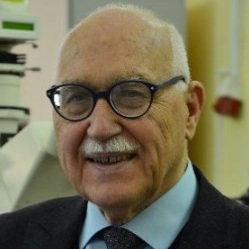Tissue Optics
A special issue of Photonics (ISSN 2304-6732). This special issue belongs to the section "Biophotonics and Biomedical Optics".
Deadline for manuscript submissions: closed (31 December 2021) | Viewed by 58206
Special Issue Editors
Interests: electronic engineering; biomedical engineering; optics; medical image processing
Interests: tissue optical clearing imaging; in vivo skull/skin optical clearing methods; in vitro optical clearing methods; laser speckle contrast imaging; hyperspectral imaging
2. Laboratory of Laser Molecular Imaging and Machine Learning, Tomsk State University, Tomsk, Russia
3. А.N. Bach Institute of Biochemistry, FRC “Fundamentals of Biotechnology”, Moscow, Russia
Interests: biological and medical physics; biophotonics; biomaterials, laser spectroscopy; laser and optical systems; optical and laser measurements; nanobiophotonics; terahertz dielectric spectroscopy and microscopy; LIBS; phototherapy
Special Issues, Collections and Topics in MDPI journals
Special Issue Information
Dear Colleagues,
Tissue optics is the cornerstone of biophotonics and biomedical optics research exploiting the interactions of light with biological tissues to deepen our knowledge of their Optical Properties (OP) and targeting the development of innovative optical methods and medical devices to improve health care. This is a multidisciplinary field combining biology, photonics and data science to characterize and analyze the OP of biological tissues on subcellular, cellular and tissue scales and their changes related to metabolic and morphological pathological modifications. Tissue optics is at stake in a wide range of applications, from the ex vivo spectral characterization of absorption, scattering, fluorescence and/or polarization properties, to in vivo photodiagnosis or perioperative surgical guiding, through therapeutic use of light.
This Special Issue on “Tissue Optics” will welcome basic, methodological and applied cutting-edge research contributions, as regular and review papers, dealing with:
- The development and validation of spectroscopic and/or imaging instrumentations on phantoms and on ex vivo and in vivo tissues;
- The modelling of light–tissue interactions, including inverse problem solving and OP estimation;
- The processing of multidimensional data using classification and machine learning methods;
- The development of multimodal, multispectral and/or multiscale approaches;
- The modifications of tissue OP, including optical clearing;
- The validation of the methods and tools developed in the frame of preclinical and clinical studies.
Prof. Dr. Walter Blondel
Prof. Dr. Dan Zhu
Prof. Dr. Valery V. Tuchin
Guest Editors
Manuscript Submission Information
Manuscripts should be submitted online at www.mdpi.com by registering and logging in to this website. Once you are registered, click here to go to the submission form. Manuscripts can be submitted until the deadline. All submissions that pass pre-check are peer-reviewed. Accepted papers will be published continuously in the journal (as soon as accepted) and will be listed together on the special issue website. Research articles, review articles as well as short communications are invited. For planned papers, a title and short abstract (about 100 words) can be sent to the Editorial Office for announcement on this website.
Submitted manuscripts should not have been published previously, nor be under consideration for publication elsewhere (except conference proceedings papers). All manuscripts are thoroughly refereed through a single-blind peer-review process. A guide for authors and other relevant information for submission of manuscripts is available on the Instructions for Authors page. Photonics is an international peer-reviewed open access monthly journal published by MDPI.
Please visit the Instructions for Authors page before submitting a manuscript. The Article Processing Charge (APC) for publication in this open access journal is 2400 CHF (Swiss Francs). Submitted papers should be well formatted and use good English. Authors may use MDPI's English editing service prior to publication or during author revisions.
Keywords
- Biological tissue optics and tissue optical properties
- Biomedical optics and biophotonics
- Interactions of light with biological tissues
- Theoretical and experimental modelling
- Multidimensional data processing and machine learning
- Spectroscopic and imaging techniques
- Multimodality and multiscale approaches
- Optical clearing
- Basic research and translational research (clinical applications)
- Photodiagnosis, surgical guiding and therapeutic methods







